Let me introduce you to 16 Easy Ways to Increase Protein in Smoothies without Protein Powder!
With a few simple changes, you can turn a simple fruit smoothie or your favorite green smoothie into a protein-rich smoothie in no time!
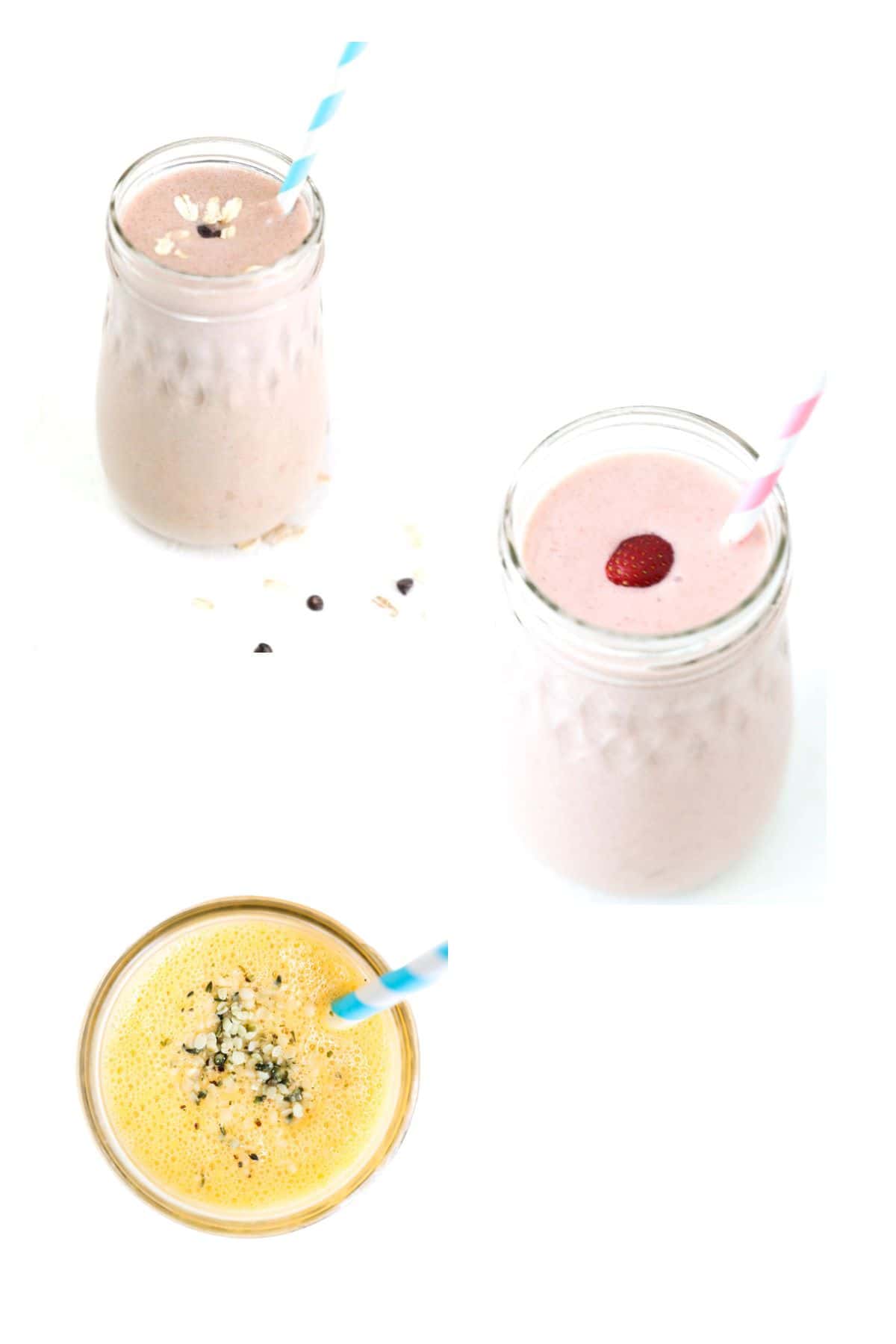
If you've ever wondered how to get protein into a smoothie without protein powder, this is the post for you! Whether you are looking for a filling smoothie to help avoid snack cravings or if you are trying to build muscle, I'll show you how easy it is to add protein to smoothies.
I thought I was an expert at making smoothies until I had teenagers, lol. The recent obsession with 'everything protein' has kept me on my toes... in a good way! 🤩
While it's easy and convenient to add a pre-packaged protein shake or protein powder to a smoothie for a protein boost, they aren't always necessary. I will break my list of protein sources that go well in smoothies into two categories: dairy and non-dairy.
The good news is that you don't need to shop at Whole Foods to find the ingredients. In fact, my local grocery store sells them all!
Jump to:
Should I Add Protein to Smoothies?
It depends 😉 Afterall, if you are making a simple fruit smoothie to go with a high protein breakfast (such as an egg casserole with breakfast sausages), there's probably no need to add even more protein.
However, if the smoothie you're making is your complete breakfast, then, yes, it's probably a good idea to add a protein source or two (or three;) to your smoothie.
Dietitian Tip
High-protein smoothies are one of the easiest ways to ensure you are getting enough protein in your diet. They are especially a great option for people who otherwise have a hard time meeting their protein needs.
How to Increase Protein in Smoothies (Contain Dairy)
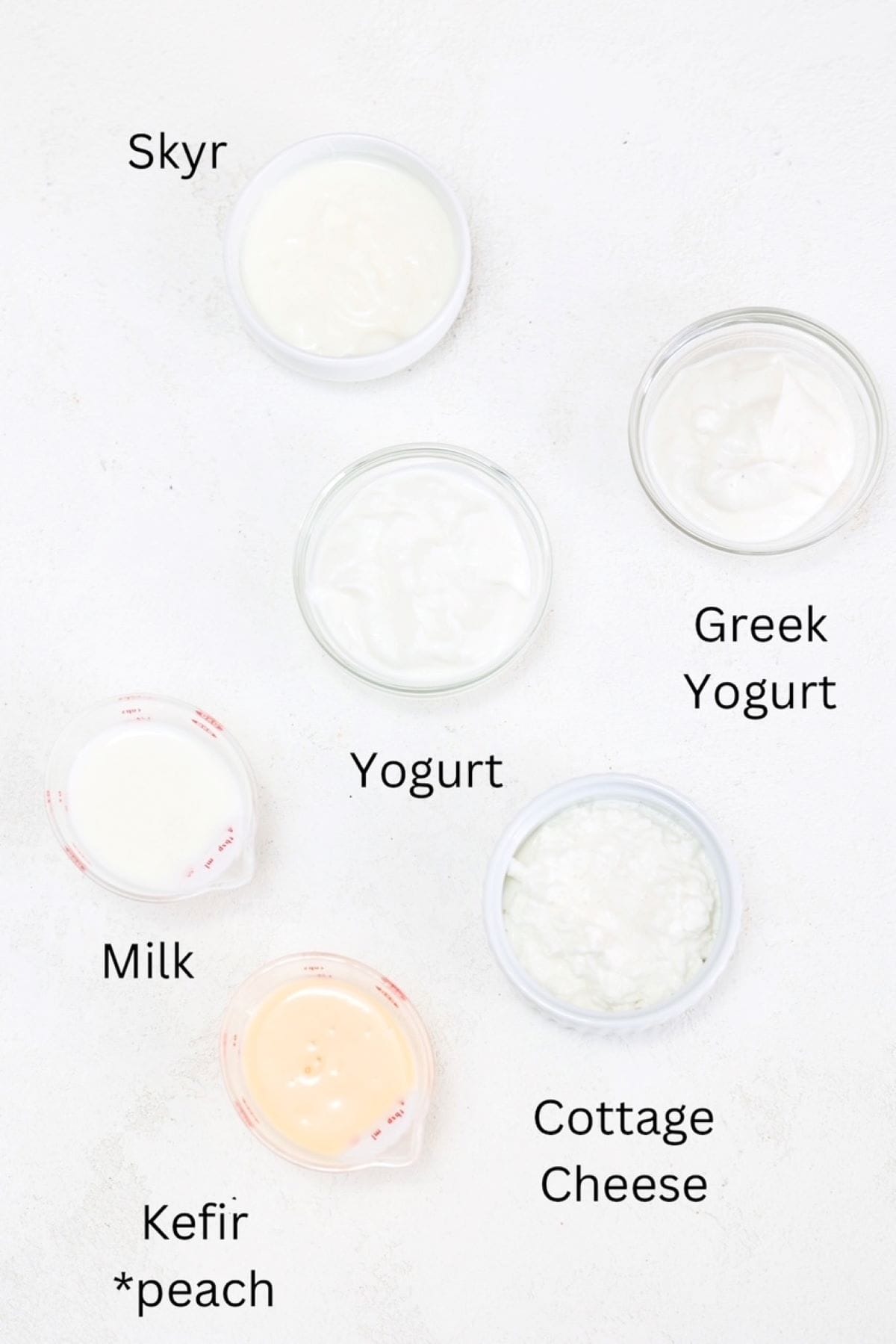
1. Milk
Using dairy milk instead of water or juice to make a smoothie is an easy way to add protein without changing the flavor much. Cow's milk provides 8 grams of protein per cup. Skim milk, Low-fat milk, and whole milk contain the same amount of protein per serving.
2. Yogurt
Yogurt adds protein and calcium to smoothies. It's not as thick as Greek yogurt and the taste is less noticeable in smoothies. It's also not as high in protein as Greek yogurt. Regular yogurt contains 4.5 grams of protein in one-half cup.
3. Kefir
Kefir is a fermented milk drink that can be found in the dairy section of most grocery stores. Just like yogurt, kefir can be found plain (unflavored) and in a variety of flavors. In fact, I referred to it as "drink yogurt' to my kids when they were younger. It's a great source of protein, probiotics, and vitamin D. Lifeway kefir provides 10 grams of protein per cup.
4. Greek Yogurt
In my opinion, Greek yogurt is one of the easiest ways to add a good amount of protein to smoothies. Plain Greek yogurt (without added sugar) has a creamy texture and adds 9.5-12 grams of protein in one-half cup.
5. Skyr
Skyr is an Icelandic cultured dairy product that can be found in the yogurt section of most grocery stores. It's high in protein and consumed like yogurt. Siggi's low fat Skyr contains 11 grams of protein in one-half cup (I like to use skyr to make a smoothie bowl).
6. Cottage Cheese
Cottage cheese blends right into smoothies. The taste is noticeable, so I recommend adding no more than one-quarter of a cup the first time you add cottage cheese to a smoothie. Cottage Cheese Contains 13-14 grams of protein in one-half cup.
How to Increase Protein in Smoothies (Non-Dairy)
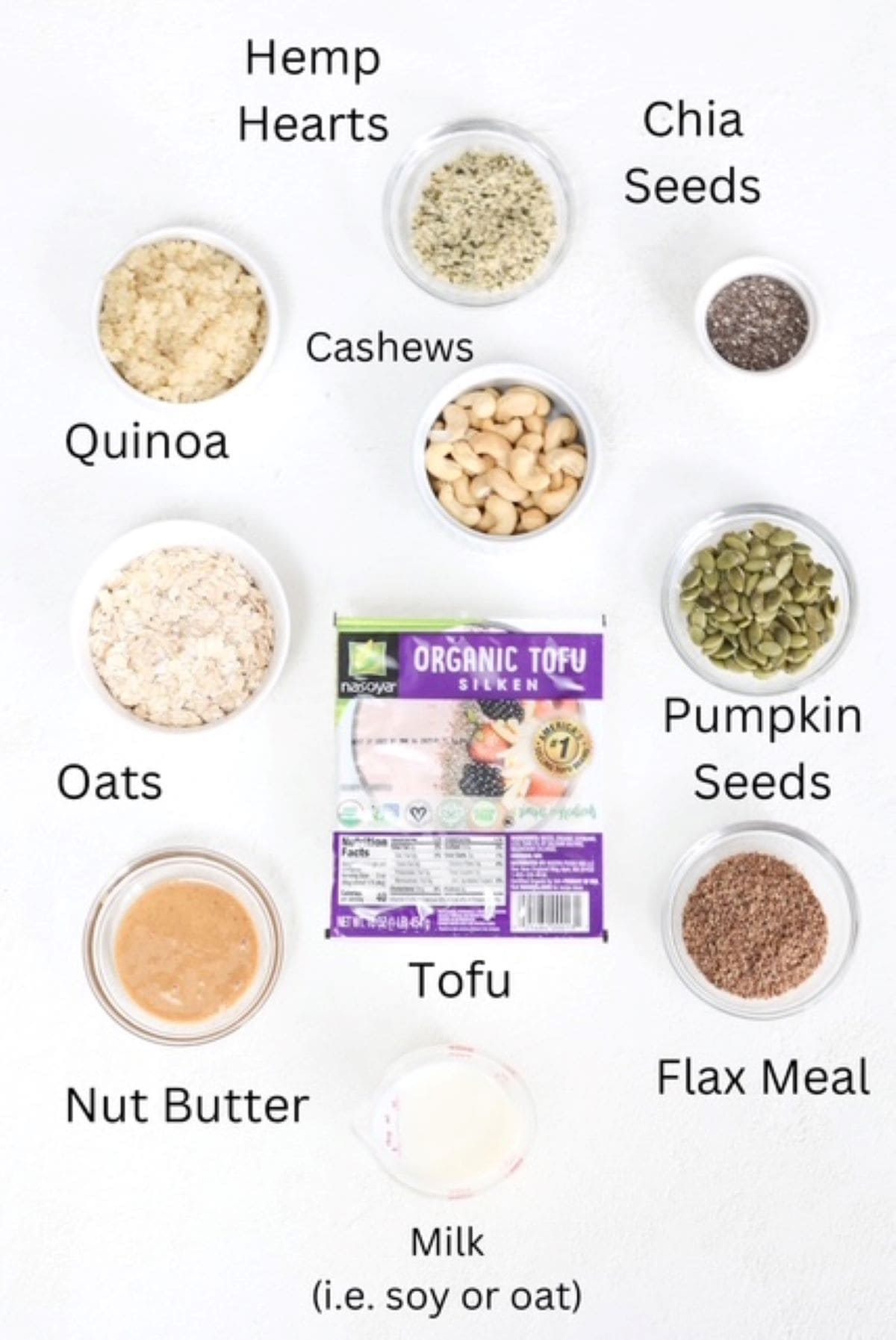
7. Chia Seeds
Chia seeds are a good source of protein, fiber, and omega-3 fatty acids (known as healthy fats). They can be blended into a smoothie or sprinkled on top of a smoothie or smoothie bowl just before serving. One tablespoon of chia seeds provides 2.5 grams of protein.
8. Flax Meal
Flax meal is the same as ground flaxseed and contains 3 grams of protein in 2 tablespoons. Of course, you can always add whole flax seeds instead, but they don't blend as well. Flax seeds are also an excellent source of fiber and omega-3 fatty acids.
9. Rolled Oats
Oats are a good source of protein and fiber. My son adds oats to his peanut butter banana oatmeal smoothie. Oats Contain 3 grams of protein in one-quarter of a cup. It may not seem like much protein, but it all adds up. *Don't add uncooked steel cut oats to smoothies.
10. Seed and Nut Butters
Adding nut and seed butters, like peanut butter, almond butter, or sunflower seed butter, is a great way to add calories and protein to your smoothies. Peanut butter and almond butter add about 4 grams of protein per tablespoon. Sunflower seed butter adds about 2.5 grams of protein per tablespoon.
11. Quinoa
Cooked quinoa can be added to smoothies for a protein boost. Quinoa is an ancient grain that is rich in protein; it's reportedly a complete protein, containing all essential amino acids. One-quarter cup of cooked quinoa will add 4 grams of protein.
12. Hemp Hearts
Hemp hearts are also known as shelled hemp seeds. They are a good source of protein, fiber, and omega-3 fats. Hemp hearts contain 5 grams of protein per tablespoon. *If you make my oatmilk smoothie with hemp hearts, you might notice a light layer of foam on the top (it should settle after a minute or two).
13. Cashews
One-quarter cup of cashews provides 5 grams of protein. Soaking cashews first, before blending them into a smoothie, will give you the best results.
14. Pumpkin Seeds
Pumpkin seeds are also known as pepitas. If using raw shelled pumpkin seeds, soak them first (before blending). Pumpkin seeds contain 6 grams of protein in 2 tablespoons. Pumpkin seeds are also a good source of iron and magnesium.
15. Soy Milk
Soy milk is a plant-based milk. It contains 7 grams of plant-based protein per cup. Soy milk contains the highest amount of protein per cup compared to almond milk, oat milk, and coconut milk.
16. Silken Tofu
Tofu is a plant protein made out of soybeans. Silken tofu blends well and adds a creamy consistency to smoothies. In fact, I use it to make a creamy non-dairy smoothie. Silken tofu adds 9 grams of protein in one half of a cup.
Helpful Tips
- Remember that taste matters, too 🙂 In my opinion, there's no point in packing a smoothie with protein (or anything else for that matter) if you don't enjoy drinking it.
- The first time you add one of these foods to increase protein in smoothies, add a small amount at a time, one food at time. This way, you'll know what you like and don't like added to smoothies.
- Adjusting the type or amount of milk can change the nutrient information of a recipe significantly.
- Products are changing all the time, so refer to the Nutrition Facts Label of the products you use to know exactly how much protein it contains. I got most of the information in this post from products in my pantry at home and confirmed them with brands commonly found online.
Questions You May Have
It depends on your protein needs, what else you are eating and drinking in a day, and what your taste preference is.
Some smoothies have no protein, while others have 60 g of protein or more per serving.
You can but it probably won't taste as good once it's defrosted.
For example, in my experience, smoothies and smoothie bowls made with yogurt don't have the same texture once they are defrosted.
Proteins are made from amino acids which serve a variety of roles in the body. Aside from helping to maintain lean body mass (muscle), eating protein with meals also helps you feel full longer.



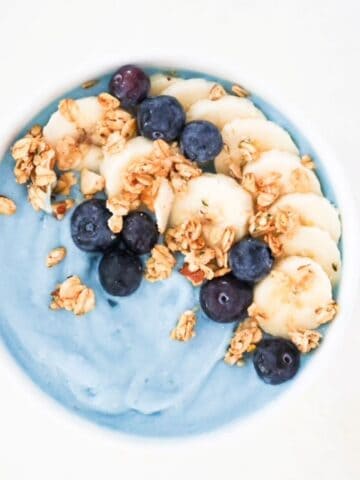

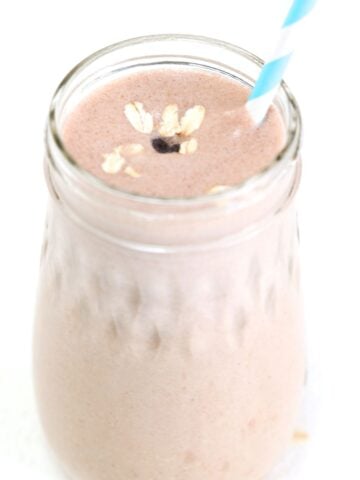
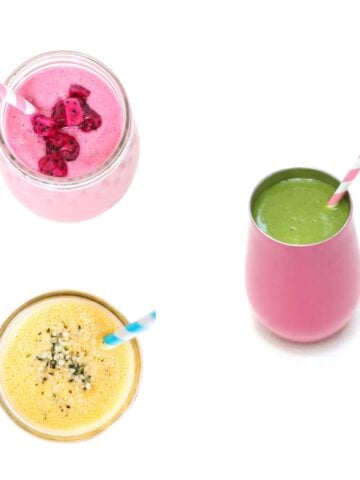
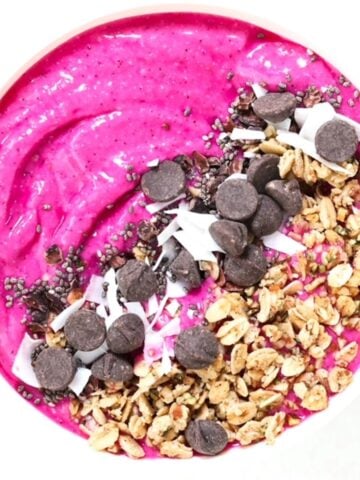
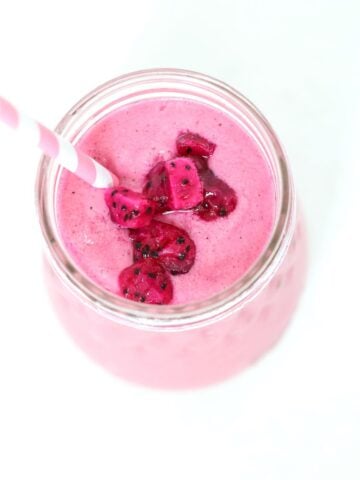
Leave a Reply